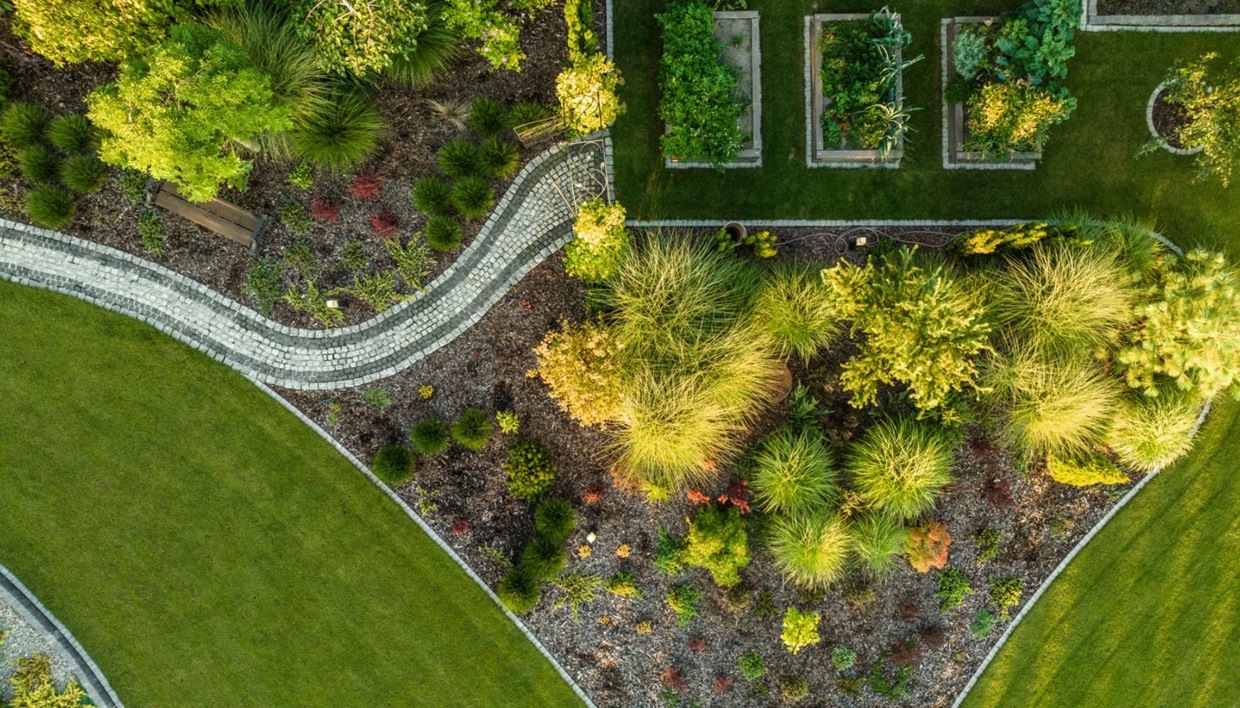Caring for your lawn and garden can feel discouraging when patches appear, plants struggle, and the space no longer feels inviting. You want to enjoy a yard that welcomes guests and helps you unwind, but it’s hard to know which steps actually make a difference. Guesstimating fertilizers, watering schedules, or plant choices can waste time and money without yielding improved results.
It’s easy to put things off when you’re unsure where to start. But every healthy, beautiful yard begins with the same foundation: understanding how soil, light, and water work together. With the right approach, you can create a landscape that reflects your style and thrives with less effort.
This guide helps you do exactly that. You’ll learn how to build stronger soil, select plants that suit your space, conserve water, define clean borders, and enhance safety and ambiance with lighting. Each part offers clear guidance in simple terms so you can make confident choices and enjoy an outdoor space that looks great, functions well, and feels like home.
How Does Lawn & Garden Care Support Healthy Growth?
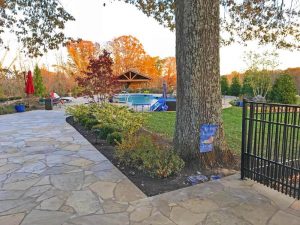
Seeing your yard flourish begins with understanding how plants respond to their surroundings. When you care for soil, cut grass at the right height and water deeply, roots stretch down and resist drought. In shaded beds, thinning branches lets light reach the ground, and mulching keeps moisture where it belongs. Healthy growth is a result of many small choices that come back to paying attention to the living system you have.
Good care also means you are not working against nature. Our team believes in building organic matter, choosing species suited to your climate, and encouraging beneficial insects. When you observe how water drains after a rain or where the sun hits the longest, you can adapt your routine. Some of the most reliable lawn maintenance tips begin with timing: mow when grass blades are dry, feed cool-season lawns in fall and warm-season lawns in late spring, and sharpen blades regularly. Practicing sustainable gardening by composting yard waste and planting drought-tolerant varieties reduces waste and supports the health of your property.
Before the busy growing season, gather tools and schedule tasks that support healthy growth. A checklist can help:
- Test soil pH and adjust if needed using lime or sulfur.
- Aerate compacted areas to improve air flow and root penetration.
- Lay down compost or organic mulch around shrubs and perennials to insulate roots.
- Pull weeds while they are small so they do not compete for nutrients.
- Use a rain gauge to monitor rainfall and adjust your watering schedule accordingly.
These simple practices build a foundation that keeps your lawn and gardens thriving through every season, leaving you more time to enjoy being outside happily with friends.
What Lawn Maintenance Tips Save You Time?

Weekends should be for relaxing, not endless yard work. To keep your property looking neat without spending every spare hour on chores, focus on tasks that deliver the most benefit in the least time. Smart lawn maintenance tips start with setting up your schedule so you can use the right tool at the right moment. Mowing in the early evening when the sun is lower reduces stress on the grass. Keeping mower blades sharp means you can mow less often.
The way you water can also shorten your to‑do list. Water deeply once or twice a week to encourage roots to grow downward, which reduces the need for frequent irrigation. Installing drip hoses in beds keeps moisture at the soil line, and mulching clippings back into the lawn returns nutrients without the need for extra fertilizer.
For those who like checklists, try this time-saving routine:
- Mow at the highest recommended height for your grass type and leave clippings in place.
- Edge paths monthly; using edging such as stone or metal strips reduces trimming.
- Maintain equipment by cleaning filters and sharpening blades at the start of each season.
- Walk the yard each week, pulling weeds early so they do not become bigger jobs later.
- Group tasks by area so you are not bouncing from front to back.
Another of our favorite lawn maintenance tips is a weekly fifteen-minute tidy and tool check; this prevents bigger jobs later on. Adapting these simple habits cuts down on hours spent outside with tools and frees you up to enjoy long evenings on your patio, invite friends over for a barbecue, and relax in comfort all season.
Which Garden Edging Ideas Define Your Space?
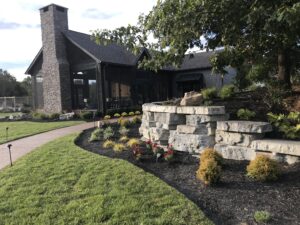
Clear borders make any yard look intentional. When you mark the transition between grass and planting beds, you guide the eye and make maintenance easier. Garden edging ideas range from subtle to striking. In a Lawn and garden setting, edging keeps mulch in place, prevents grass from creeping into flower beds, and gives you a clean line to mow along.
The material you choose affects the mood and upkeep of your yard. Natural stone offers texture and blends with native plants. Metal strips are sleek and durable, making them ideal for use around modern patios. Wood timbers add warmth but need sealing. For a softer look, consider a living edge made of herbs or low ground covers. Brick pavers are a great choice for pathways. If sustainability matters to you, recycled plastic or composite edging can be a good fit. These garden edging ideas are suitable for both sloped lots and level lawns.
When considering garden edging ideas, think about how they complement other elements. Edging that matches the color of your patio furniture can create a harmonious look. Install edging flush with the soil so you can run a mower wheel along it, or set it slightly above ground to hold mulch in place. Allow curves to follow natural shapes rather than forcing straight lines everywhere.
A few rules of thumb:
- Measure twice before you buy materials to avoid waste.
- Use stakes and a garden hose to lay out curves, and ensure you like the shape.
- Explore our design process for inspiration on incorporating edging with plant layers.
With thoughtful choices, edging defines spaces and makes your yard easier to care for.
Can Sustainable Landscaping Help Your Yard Thrive?
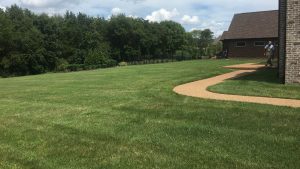
Caring for your yard does not have to come at the expense of the environment. Sustainable landscaping is about working with local conditions rather than fighting against them. By choosing native plants that are adapted to your climate, you reduce the need for extra water and fertilizer. Healthy soil rich in organic matter retains moisture and nourishes microbes, which in turn support plant roots. Collecting rainwater in barrels and directing it to beds keeps water on your property instead of sending it down a storm drain. These small shifts add up, giving your lawn and garden true resilience.
Incorporating sustainable landscaping practices can also simplify your routine. Selecting drought-tolerant grasses means you can water less often. Leaving grass clippings on the lawn and adding compost each year replenishes nutrients without the use of synthetic chemicals. Limiting lawn size and creating larger beds filled with shrubs and perennials reduces mowing time; it also provides a home for pollinators and birds. For more ideas on plant choices, our native plant guide offers helpful lists.
You can start your own sustainable landscaping journey by following a few simple steps:
- Group plants by water needs so you do not overwater some while underwatering others.
- Use porous pavers or gravel for paths and patios to allow rain to soak into the ground.
- Mulch bare soil to prevent erosion and keep roots cool.
- Test the soil before adding fertilizer; sometimes what appears to be a nutrient problem is actually compaction.
- Set up a compost bin for leaves and kitchen scraps to create your own soil amendment.
Making these thoughtful decisions supports a yard that thrives through tough conditions while lowering your workload and promoting a healthy ecosystem.
How Does Outdoor Lighting Enhance Safety & Style?

Even the most beautiful landscape fades after sunset unless it is showcased with well-placed lighting. Outdoor lighting does more than highlight a walkway or tree; it makes your property safer. A simple path light prevents tripping on steps, while a softly illuminated entry makes guests feel welcome. Motion-activated fixtures deter unwanted visitors.
Lighting can also create mood and emphasize features you love. Uplighting a mature tree adds drama, and downlighting from a pergola casts a gentle glow over a seating area. Using warmer bulbs near seating and cooler ones for plant highlights brings balance. If you are considering sustainability, low-voltage LED fixtures consume less power and have a longer lifespan. Solar fixtures help reduce energy use and align with eco-friendly practices. Connecting lights to timers or smart controllers ensures they turn on and off at the right moments.
To plan your lighting, consider the layers you want to achieve. Task lighting brightens steps and cooking spaces. Accent lighting draws attention to focal points, such as water features or sculptures. Ambient lighting fills in the background with a soft wash. Start with the areas you use most and build out from there. If you add fixtures gradually, you can evaluate each effect before installing more.
A few simple steps will help you get started:
- Walk your property at night to identify dark spots and hazards.
- Sketch a basic lighting plan, noting power sources and desired effects.
- Choose fixtures that match your style and are rated for outdoor use.
Our portfolio has creative examples for inspiration. With thoughtful lighting design, you will feel safer, show off your garden at night, and enjoy evenings under the stars.
Your yard is an extension of your home, and with the right approach, it can become a place you look forward to spending time. By nurturing soil and mowing thoughtfully, you encourage strong, healthy roots. Scheduling tasks and following simple care routines keep upkeep manageable. Selecting edging options that suit your style defines the space and makes beds easier to maintain. Adopting eco-friendly landscaping techniques supports wildlife and reduces water and chemical use. Adding outdoor lighting layers brings safety and ambience so you can enjoy evenings outside.
Your Partner in Lawn & Garden Care
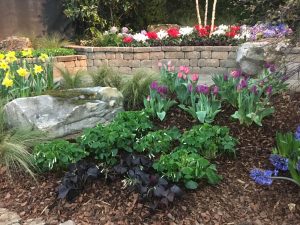
As you implement these ideas, pay attention to how your property responds to them. Small adjustments, such as setting mower blades higher or grouping plants by water needs, can have significant effects over time. If you need help selecting materials or creating a plan tailored to your specific home, please contact us. We love helping clients craft spaces they love, and we can discuss how our experience supports your plans for your yard today.

